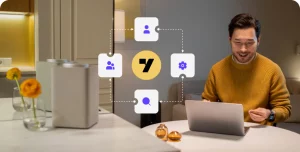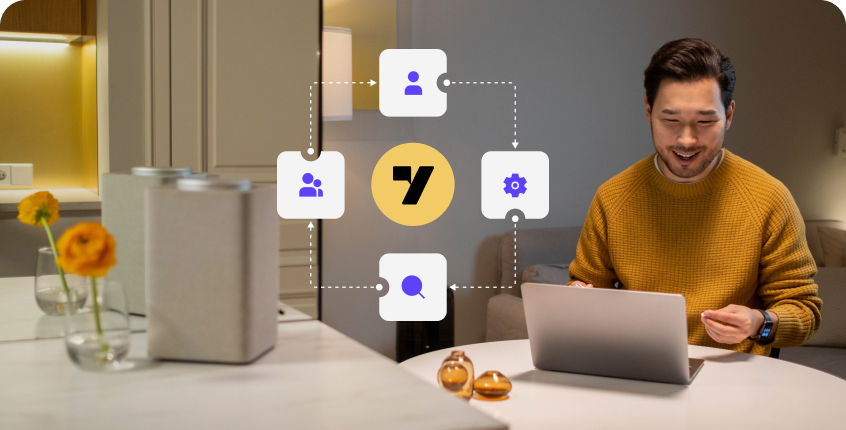In todays paced world businesses are always looking for innovative ways to make their operations more efficient and improve the experience of their employees.
One particular innovation that has gained a lot of popularity is the Digital HR Assistant. This advanced technology combines intelligence. Automation to revolutionize how human resources are managed.
By integrating into HR departments digital HR assistants have the potential to completely transform HR practices. They offer increased efficiency, accuracy and a personalized approach, to every aspect of employee management.
In this exploration we will take a look at the capabilities and potential benefits of a Digital HR Assistant. We will shine a light on its role, in todays workplace.
1. Recruitment
Human capital is often regarded as a company’s greatest asset. If a company hires smart people, more than half of its work is done. Here’s when Cognitive HR Digital Assistants come in handy and can help simplify the task of matching applicants’ skills with requirements. And narrowing down the pool of applications to a selected few resumes. This helps the hiring managers to connect only with the rightful top-cohort candidates, thereby improving the efficiency and speed of recruitment.
Here’s how a Cognitive HR Digital Assistant can contribute towards smart recruitment:
1. Send offers on multiple platforms and probe the candidate in conversations
2. Schedule interviews and meetings by accessing multiple calendars and other systems at the backend.
3. Answer FAQs on company policies, culture, and interview related queries
4. Provide post-interview feedback to candidates regardless of results.
5. Take interviewer feedback from candidates
6. Send offer letters, call letters and salary contracts
7. Notify employees of new joiners
A Cognitive Digital Assistant sitting over the layer of a Whatsapp Business Account can be effectively used to engage with prospective candidates for the above-mentioned automation action items.
2. Leave management
On average, a company gives 30 leaves annually. There are 30 instances where a Cognitive HR Digital Assistant can help employees to apply, modify, or cancel their leaves in a frictionless manner. It has access to the employee’s past leaves, leave balance, company holiday calendar based on the region and can assist in applying for a leave in a matter of seconds.
Here’s how a Cognitive HR Digital Assistant can contribute towards smart leave management:
1. Employees can apply for casual leaves, privilege leaves, and on-duties. They can also automatically update out of office statuses
2. Employees can track the number of days they have taken off and check the remaining days that they can avail of leaves
3. Managers can approve or decline the requests through the bot, thus saving the time spent on sending out emails, calls or meetings
3. Answering FAQs
Employees spend many hours each month searching for basic company-related information. To delight employees and save their time for productive work, Cognitive HR Digital Assistants come in handy to quickly get employees the answers they are looking for. At the back-end, the bot Search across thousands of documents across knowledge management systems (like Google Drive, Sharepoint, ServiceNow, etc.) to answer user queries in a matter of seconds.
Here’s how a Cognitive HR Digital Assistant can contribute towards smart FAQ handling:
1. Respond to employee queries in multiple languages
2. Available 24/7Give fast and accurate responses through document cognition
3. Answer queries on company policies, organization structure, benefits, etc.
4. Route complex queries to the HR team for resolution
4. Meeting scheduler
There is no I in Team and just like that, there’s no business output without collaboration. The Cognitive HR Digital Assistant can help employees schedule meetings on the go. Identifying convenient-to-all meeting time and date is difficult especially when the employees are spread across multiple time zones.
With a Cognitive HR Digital Assistant, employees can choose a convenient-to-all meeting time, date, location, and even book calendars. It only blocks time slots based on the availability of all participants and prompts the meeting host if there are any clashes with upcoming holidays or prescheduled meetings to reduce back and forth emails.
Here’s how a Cognitive HR Digital Assistant can contribute towards scheduling smart meetings:
1. Enable employees to book meetings anytime
2. Recommend suitable meeting slots based on everyone’s availability
3. Suggest suitable meeting room venues available on site for the required time slot
4. Send meeting invites to all the participants and update their calendar
5. Employee onboarding
Once the recruitment is done, the next big challenge is to absorb the employees into the company culture and structure at the earliest. Cognitive HR Digital Assistants help make on-boarding a self-serve process as new hires can ask any questions that they may have related to policies, teams, hierarchy, culture, and more. It fetches the responses in the back-end from multiple back-end software like Workday, SAP, PeopleStrong, Oracle, HRBerry, and more.
Here’s how a Cognitive HR Digital Assistant can contribute towards the pre-onboarding process:
1. Answer company and interview related queries
2. Take Pre-interview and post-interview feedback
3. Handhold candidates till they join, on a platform with high adoption like WhatsApp Schedule interviews for senior management candidates (niche services)
4. Send offers on multiple platforms and probe the candidate in conversations
5. Notify on the company announcements and updates till onboarding
Here’s how a Cognitive HR Digital Assistant can contribute towards the onboarding process:
Assist candidates to fill and upload necessary forms and documents through the chatbot.
1. Help candidates to enroll in company programs
2. Guide the new hires through the company policies
3. Help employees understand the organizational structure and core values
4. Take feedback from new hires on the onboarding process.
5. Schedule meetings with the manager or team members
6. Help employees with required approvals, software access, and machine setup
7. Maintain checklist and send notifications on things to do during onboarding
6. Reimbursement processing
Employees can easily file for reimbursement of bills, team hangouts, medical reimbursements, income tax forms, and more, with the help of a Cognitive HR Digital Assistant. It comes power-packed with OCR capabilities, which enabled it to scan uploaded images and store them in the database for further processing by the concerned team.
Here’s how Cognitive HR Digital Assistant can contribute towards smart reimbursement processing:
1. Collect relevant employee information through forms and questionnaires
2. Allow employees to upload bills/supporting documents
3. Store the documents and data in a centralized location for further processing
4. Answer doubts or queries regarding the reimbursement process
5. Generate documents like employee certificate, gross salary certificate, etc.
7. Payroll management
Employees can now access information regarding salaries, incentives, bonuses, deductions, and net pay at any time without any hassle. The Cognitive HR Digital Assistant can respond to employee queries instantaneously by understanding the context and pulling data from multiple backend sources.
Here’s how a Cognitive HR Digital Assistant can contribute towards smart payroll management:
1. Draft the payroll by calculating the clocked-in hours for the working days and tax deducted for each employee
2. Issue pay-slips on time
3. Manage tax reimbursement documents
8. Employee analytics
Once a quarter review is not enough when employees are charged with changes and emotions every day. The traditional review process is ineffective and can more often than not, be unpredictable in nature. Cognitive HR Digital Assistants allow for the instant exchange of feedback and performance insights that allow employees to constantly be the best at what they do. And more than that, predict attrition, churn, bad management, and save the enterprise a whole lot more.
Here’s how a Cognitive HR Digital Assistant can contribute towards smart employee analytics reporting:
1. Calculate employee turnover rate, retention rate, employee NPS, excitement score and diversity ratios
2. Calculate the percentage of employees looking for an internal transfer
3. Maintain job referral percentage and notify the hiring managers periodically
4. Keep up-to-date on pay gap analysis
Leverage the power of next gen AI automation























